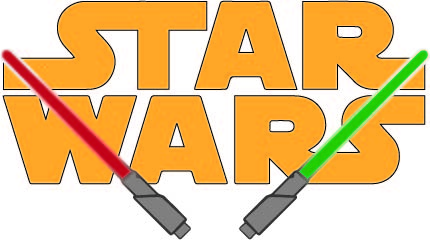Liam’s Artist Spotlight: The Star Wars Soundtrack
“Star Wars” has had a major influence on my life; I could write an entire book about my thoughts on the matter, and how it has shaped my tastes. In this article, however, I’ll be focusing on the soundtracks. I owe them a large part of my appreciation to music. With nine movies and five shows, there’s a lot to appreciate.
Now, the first movie, “A New Hope,” can be considered a bit of an enigma within the series. George Lucas wanted the feeling of “The Planets” by Gustav Holst to establish the sound in the series. So, while the soundtrack did have its own identity, it was kind of like the younger sibling. I mean if you listen to “Mars” and “The Final Battle” side by side, the similarities start coming out. “The Empire Strikes Back” and “Return of the Jedi” are where John Williams began creating the series’ musical identity. Rather than continuing with basing it off “The Planets” he began making his own sound. This gave way to iconic pieces such as “The Asteroid Field,” “The Emperor” and possibly the most well known “The Imperial March.” These two movies are where Luke’s theme was transformed into the main theme for the series.
While the prequel trilogy was lacking in a lot of things, it’s where John Williams really began flexing his musical muscles. He went hard on themes: character themes, planet themes and battle themes. These movies brought about songs like “Duel of the Fates,” “Across the Stars” and “Battle of the Heroes.” He even alludes to pieces from the original trilogy. For example, Young Anakin’s theme includes bits from both “The Emperor” and “The Imperial March.”
The final trilogy is a bit of a shame. Musically it started strong with Williams composing a variety of concrete themes for a series with no direction. Some really good pieces came from this: “Rey’s Theme,” “The Starkiller,” and the first order motifs. However, in “Episode VIII,” the direction did a 180 and the music faltered with it. I mean, “The Spark” is pretty cool, but mostly because it’s essentially “Luke and Leia” from “Return of the Jedi” with a slow, building swell. By “Episode IX,” Williams was relegated to musical references. ‘Oh, remember the emperor?’ ‘Remember when Yoda lifted that ship?’ ‘Remember Vader’s redemption theme?’ John Williams, and the Skywalker saga, went out with a whimper.
The first time the musical torch was passed on was in 2003, for the animated “Clone Wars” series. Here James Venable and Paul Dinletir essentially composed a series of mildly forgettable battle themes for a show that was essentially two hours of non-stop fighting.
In 2008, the torch was passed to Kevin Kiner. He took a very safe approach early on with the classic action show philosophy of semielectronically-augmented-orchestral music. While it had its own identity through the new characters it established, Kiner also pulled a lot from the “Star Wars” movies when creating scores around already established characters. By the end of the show’s run, he tended to lean more into the orchestral portion while putting his own Kiner spin on things. He kept the latter style while working on 2014’s “Star Wars: Rebels.” Since the show mainly focused on newer characters, Kiner got to work with quite a bit of newer music, but he still brought back old themes with the introduction of characters established from previous canon, not just as cameos, but driving forces.
2016’s “Rogue One” is also an enigma. Michael Gacchino had four weeks to write, compose and perform the soundtrack. Within that time, he created a soundtrack that was almost entirely separate from the main series, yet it sounded like it had been ripped straight from the Star Wars universe.
2018’s “Solo” soundtrack was a different story. John Williams came on to create the theme, but creative liberties were largely given to John Powell. He took the soundtrack in a very different direction. Since the movie is, at its core, a heist movie, the soundtrack had a very heist-y feel to it, while also dragging in some tribal elements for one of the antagonists in the film. While the soundtrack is decent, it doesn’t have the same feel as its predecessors.
“Resistance” is a case I don’t know much about. I personally have seen one episode of the show and haven’t taken the time to listen to the soundtrack. But, from what I’ve read, Michael Tavera’s score is one of the highlights of the series.
The last composition to touch on is “The Mandalorian.” Ludwig Goransson masterfully turned the sound of “Star Wars” into a spaghetti western-style soundtrack, and that’s about all there is to say. With about 30 minutes of music per episode, each one has its own identity without being too different from the last.
Describing how instrumental music makes you feel is difficult. I’ll list a few songs I feel are worth a listen. “The Mudhorn” by Ludwig Goransson. “Burying the Dead” and “Journey Into the Star Cluster” by Kevin Kiner. “Savareen Stand-Off” by John Powell. “Your Father Would be Proud” by Michael Giacchino. “Qui-Gon’s Noble End,” “Love Pledge and the Arena,” “Star Wars and the Revenge of the Sith,” “Ben’s Death and TIE Fighter Attack,” “The Battle in the Snow,” “Into The Trap,” “On the Inside” and “The Spark” by John Williams. That’s all for this week. As always, send feedback and criticism to [email protected]. I’ll see you all in the next issue.




